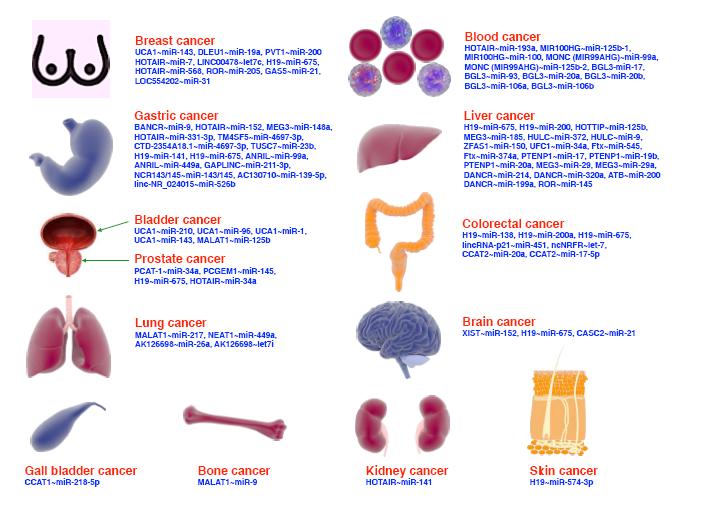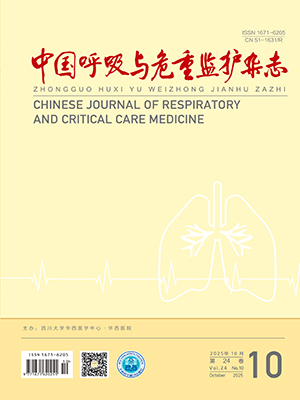| 1. |
Ledoux MP, Herbrecht R. Invasive Pulmonary Aspergillosis. J Fungi (Basel), 2023, 9(2): 131.
|
| 2. |
El-Baba F, Gao Y, Soubani AO. Pulmonary Aspergillosis: what the generalist needs to know. Am J Med, 2020, 133(6): 668-674.
|
| 3. |
叶先平, 朱美英, 刘璐璐, 等. 慢性阻塞性肺疾病并发侵袭性肺曲霉病诊治策略. 中国呼吸与危重监护杂志, 2019, 18(4): 392-395.
|
| 4. |
沈焜路, 王玉, 顾彧, 等. 流感相关侵袭性肺曲霉病的早期诊断. 中国呼吸与危重监护杂志, 2021, 20(7): 516-521.
|
| 5. |
Brookes AJ. The essence of SNPs. Gene, 1999, 234(2): 177-186.
|
| 6. |
Khassanova G, Khalbayeva S, Serikbay D, et al. SNP genotyping with amplifluor-like method. Methods Mol Biol, 2023, 2638: 201-219.
|
| 7. |
Shastry BS. SNP Alleles in Human Disease and Evolution. J Hum Genet, 2002, 47(11): 561-566.
|
| 8. |
Schonrock N, Harvey RP, Mattick JS. Long noncoding RNAs in cardiac development and pathophysiology. Circ Res, 2012, 111(10): 1349-1362.
|
| 9. |
Akira S, Takeda K. Toll-like receptor signalling. Nat Rev Immunol, 2004, 4(7): 499-511.
|
| 10. |
Roeder A, Kirschning CJ, Rupec RA, et al. Toll-like receptors and innate antifungal responses. Trends Microbiol, 2004, 12(1): 44-49.
|
| 11. |
Bochud PY, Chien JW, Marr KA, et al. Toll-like receptor 4 polymorphisms and aspergillosis in stem-cell transplantation. N Engl J Med, 2008, 359(17): 1766-1777.
|
| 12. |
de Boer MG, Jolink H, Halkes CJ, et al. Influence of polymorphisms in innate immunity genes on susceptibility to invasive aspergillosis after stem cell transplantation. PLoS One, 2011, 6(4): e18403.
|
| 13. |
Koldehoff M, Beelen DW, Elmaagacli AH. Increased susceptibility for aspergillosis and post-transplant immune deficiency in patients with gene variants of TLR4 after stem cell transplantation. Transpl Infect Dis, 2013, 15(5): 533-539.
|
| 14. |
Kalkanci A, Tug E, Fidan I, et al. Retrospective analysis of the association of the expression and single nucleotide polymorphisms (SNPs) of the TLR4, PTX3 and Dectin-1 (CLEC/A) genes with development of invasive aspergillosis among haematopoietic stem cell transplant recipients with oncohaematological disorders. Mycoses, 2020, 63(8): 832-839.
|
| 15. |
Kesh S, Mensah NY, Peterlongo P, et al. TLR1 and TLR6 polymorphisms are associated with susceptibility to invasive aspergillosis after allogeneic stem cell transplantation. Ann N Y Acad Sci, 2005, 1062: 95-103.
|
| 16. |
Grube M, Loeffler J, Mezger M, et al. TLR5 stop codon polymorphism is associated with invasive aspergillosis after allogeneic stem cell transplantation. Med Mycol, 2013, 51(8): 818-825.
|
| 17. |
Carvalho A, De Luca A, Bozza S, et al. TLR3 essentially promotes protective class I-restricted memory CD8(+) T-cell responses to Aspergillus fumigatus in hematopoietic transplanted patients. Blood, 2012, 119(4): 967-977.
|
| 18. |
Fischer M, Spies-Weisshart B, Schrenk K, et al. Polymorphisms of Dectin-1 and TLR2 predispose to invasive fungal disease in patients with acute myeloid leukemia. PLoS One, 2016, 11(3): e0150632.
|
| 19. |
Cunha C, Di Ianni M, Bozza S, et al. Dectin-1 Y238X polymorphism associates with susceptibility to invasive aspergillosis in hematopoietic transplantation through impairment of both recipient- and donor-dependent mechanisms of antifungal immunity. Blood, 2010, 116(24): 5394-5402.
|
| 20. |
Chai LY, de Boer MG, van der Velden WJ, et al. The Y238X stop codon polymorphism in the human beta-glucan receptor dectin-1 and susceptibility to invasive aspergillosis. J Infect Dis, 2011, 203(5): 736-743.
|
| 21. |
Sainz J, Lupiáñez CB, Segura-Catena J, et al. Dectin-1 and DC-SIGN polymorphisms associated with invasive pulmonary Aspergillosis infection. PLoS One, 2012, 7(2): e32273.
|
| 22. |
Fisher CE, Hohl TM, Fan W, et al. Validation of single nucleotide polymorphisms in invasive aspergillosis following hematopoietic cell transplantation. Blood, 2017, 129(19): 2693-2701.
|
| 23. |
Stappers MHT, Clark AE, Aimanianda V, et al. Recognition of DHN-melanin by a C-type lectin receptor is required for immunity to Aspergillus. Nature, 2018, 555(7696): 382-386.
|
| 24. |
Gresnigt MS, Cunha C, Jaeger M, et al. Genetic deficiency of NOD2 confers resistance to invasive aspergillosis. Nat Commun, 2018, 9(1): 2636.
|
| 25. |
Zhong J, Liu L, Lu Y, et al. NLRP3, NLRC4 and NLRC5 gene polymorphisms associate with susceptibility of pulmonary aspergillosis in non-neutropenic patients. J Clin Med, 2022, 11(7): 1870.
|
| 26. |
Wang X, Cunha C, Grau MS, et al. MAVS expression in alveolar macrophages is essential for host resistance against Aspergillus fumigatus. J Immunol, 2022, 209(2): 346-353.
|
| 27. |
Cunha C, Aversa F, Lacerda JF, et al. Genetic PTX3 deficiency and aspergillosis in stem-cell transplantation. N Engl J Med, 2014, 370(5): 421-432.
|
| 28. |
Wójtowicz A, Lecompte TD, Bibert S, et al. PTX3 Polymorphisms and Invasive mold infections after solid organ transplant. Clin Infect Dis, 2015, 61(4): 619-622.
|
| 29. |
Herrero-Sánchez MC, Angomás EB, de Ramón C, et al. Polymorphisms in receptors involved in opsonic and nonopsonic phagocytosis, and correlation with risk of infection in oncohematology patients. Infect Immun, 2018, 86(12): e00709-18.
|
| 30. |
Tang T, Dai Y, Zeng Q, et al. Pentraxin-3 polymorphisms and pulmonary fungal disease in non-neutropenic patients. Ann Transl Med, 2020, 8(18): 1142.
|
| 31. |
He Q, Li H, Rui Y et al. Pentraxin 3 Gene Polymorphisms and pulmonary aspergillosis in chronic obstructive pulmonary disease patients. Clin Infect Dis, 2018, 66(2): 261-267.
|
| 32. |
Yu Y, Liu C, Zhu C, et al. A novel algorithm for diagnosis of invasive pulmonary aspergillosis based on pentraxin 3 gene polymorphisms and its adjusted value among autoimmune diseases patients. Ann Transl Med, 2022, 10(1): 17.
|
| 33. |
Sainz J, Hassan L, Perez E, et al. Interleukin-10 promoter polymorphism as risk factor to develop invasive pulmonary aspergillosis. Immunol Lett, 2007, 109(1): 76-82.
|
| 34. |
Tanpaibule T, Jinawath N, Taweewongsounton A, et al. Genetic risk surveillance for invasive aspergillosis in hematology patients: a prospective observational study. Infect Dis Ther, 2020, 9(4): 807-821.
|
| 35. |
Lupiañez CB, Canet LM, Carvalho A, et al. Polymorphisms in host immunity-modulating genes and risk of invasive aspergillosis: results from the AspBIOmics consortium. Infect Immun, 2015, 84(3): 643-657.
|
| 36. |
Sainz J, Salas-Alvarado I, López-Fernández E, et al. TNFR1 mRNA expression level and TNFR1 gene polymorphisms are predictive markers for susceptibility to develop invasive pulmonary aspergillosis. Int J Immunopathol Pharmacol, 2010, 23(2): 423-436.
|
| 37. |
Sánchez-Maldonado JM, Moñiz-Díez A, Ter Horst R, et al. Polymorphisms within the TNFSF4 and MAPKAPK2 Loci Influence the Risk of Developing Invasive Aspergillosis: A Two-Stage Case Control Study in the Context of the aspBIOmics Consortium. J Fungi (Basel), 2020, 7(1): 4.
|
| 38. |
Mezger M, Steffens M, Beyer M, et al. Polymorphisms in the chemokine (C-X-C motif) ligand 10 are associated with invasive aspergillosis after allogeneic stem-cell transplantation and influence CXCL10 expression in monocyte-derived dendritic cells. Blood, 2008, 111(2): 534-546.
|
| 39. |
Lupiañez CB, Martínez-Bueno M, Sánchez-Maldonado JM, et al. Polymorphisms within the ARNT2 and CX3CR1 Genes Are Associated with the Risk of Developing Invasive Aspergillosis. Infect Immun, 2020, 88(4): e00882-19.
|
| 40. |
Cunha C, Giovannini G, Pierini A, et al. Genetically-determined hyperfunction of the S100B/RAGE axis is a risk factor for aspergillosis in stem cell transplant recipients. PLoS One, 2011, 6(11): e27962.
|
| 41. |
Jia LJ, Rafiq M, Radosa L, et al. Aspergillus fumigatus hijacks human p11 to redirect fungal-containing phagosomes to non-degradative pathway. Cell Host Microbe, 2023, 31(3): 373-388, e10.
|
| 42. |
Zaas AK, Liao G, Chien JW, et al. Plasminogen alleles influence susceptibility to invasive aspergillosis. PLoS Genet, 2008, 4(6): e1000101.
|
| 43. |
Liu Z, Li Y, Tian X, et al. Airway-invasion-associated pulmonary computed tomography presentations characteristic of invasive pulmonary Aspergillosis in non-immunocompromised adults: a National Multicenter Retrospective Survey in China. Respir Res, 2020, 21(1): 173.
|
| 44. |
White PL, Parr C, Barnes RA. Predicting invasive aspergillosis in hematology patients by combining clinical and genetic risk factors with early diagnostic biomarkers. J Clin Microbiol, 2017, 56(1): e01122-17.
|




